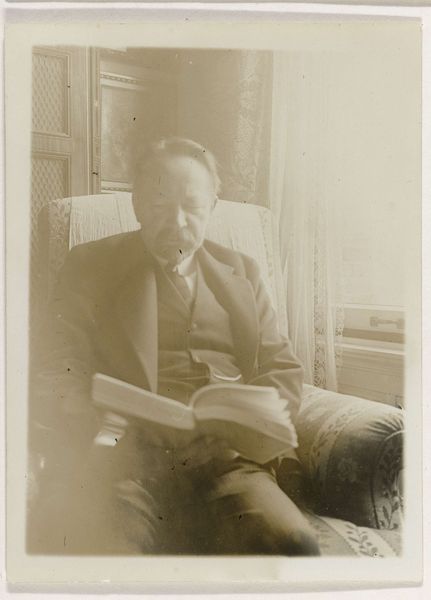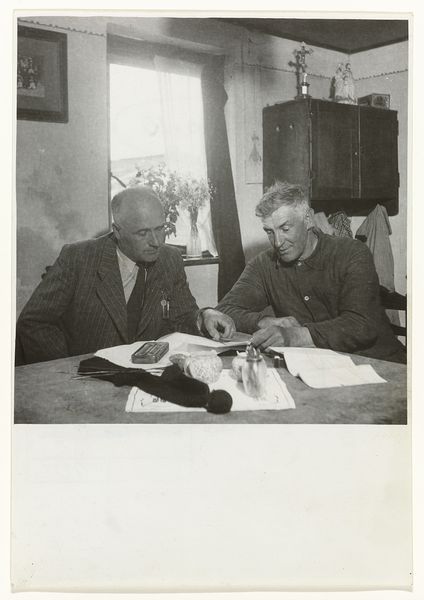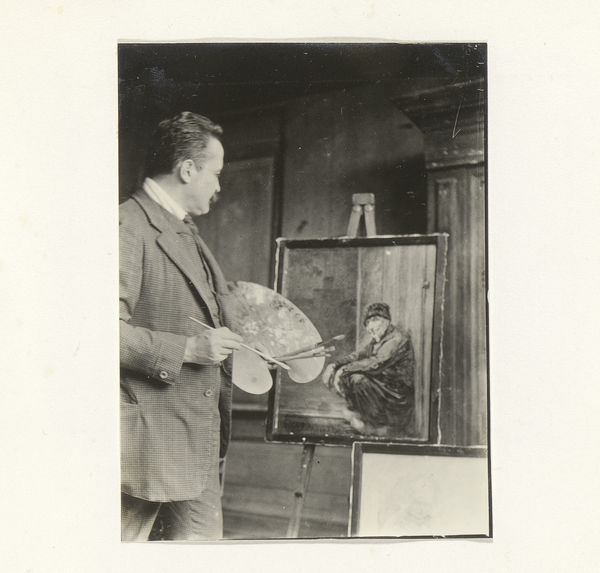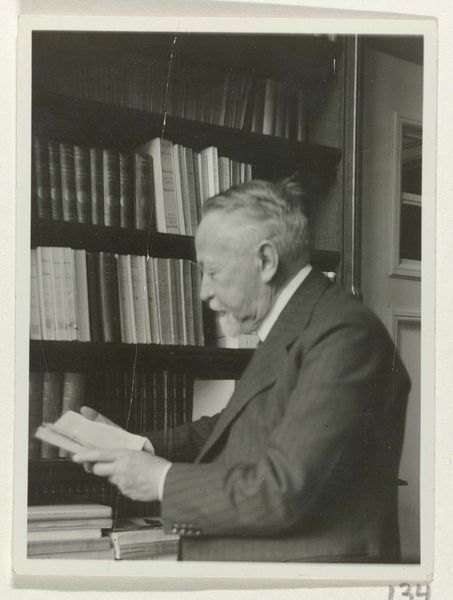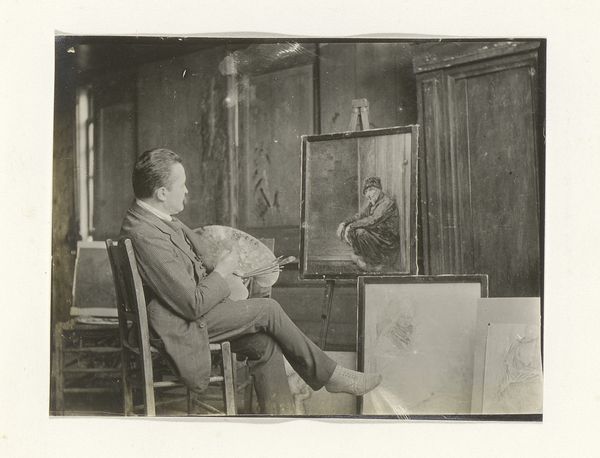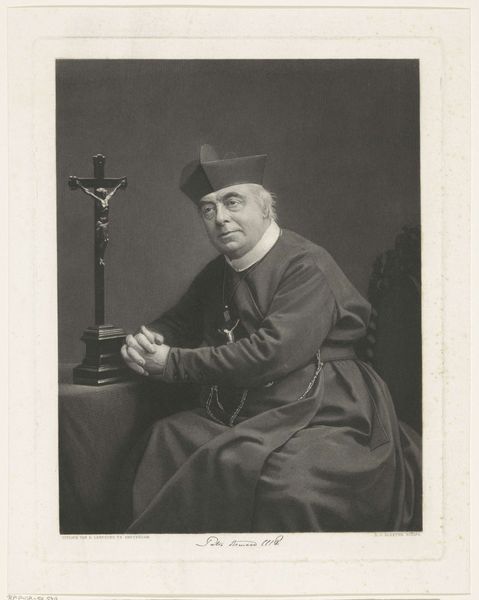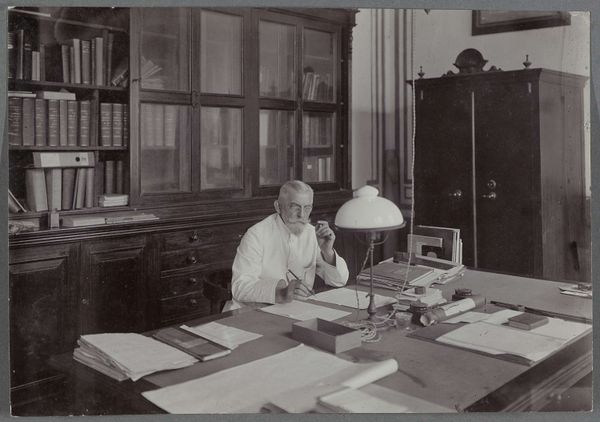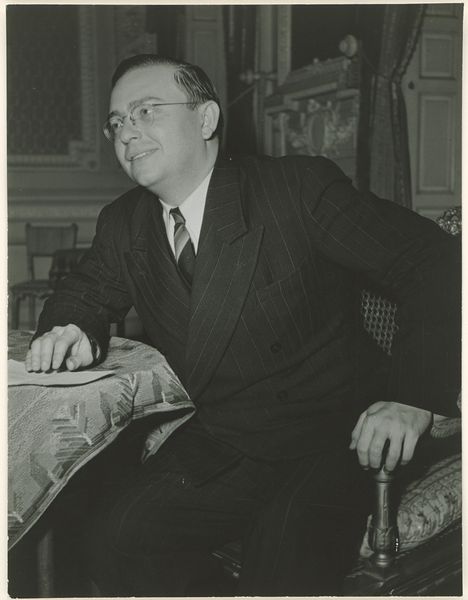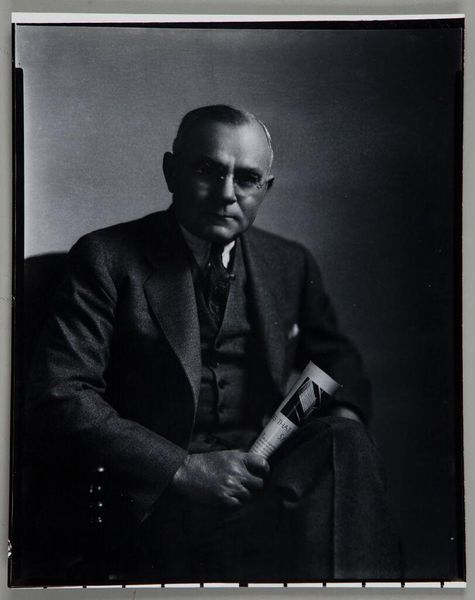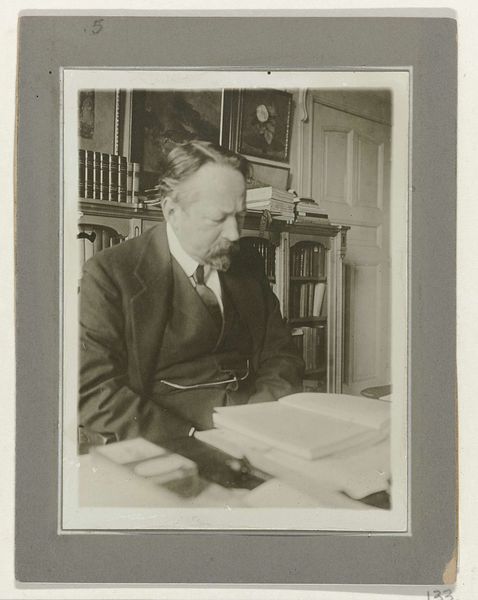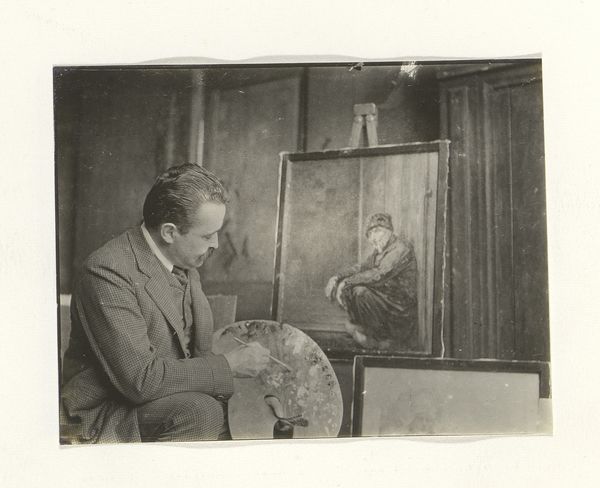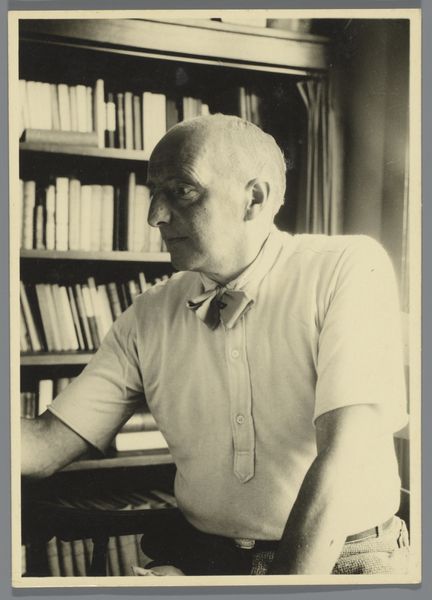
Dimensions: width 13.5 cm, height 14.5 cm
Copyright: Rijks Museum: Open Domain
Editor: This is "Mussert in de gevangenis," a gelatin silver print taken by Anefo, possibly between 1945 and 1946, now residing at the Rijksmuseum. The photograph evokes a sense of stark isolation. What symbols or narratives do you think this portrait conveys? Curator: Look at how the photographer has captured Mussert within this very constrained space. The barred window, the sparse furniture... These aren’t just details; they are loaded with meaning. Do you see how the cold, stark light dehumanizes the subject, stripping away any semblance of power? Consider the symbolism of imprisonment itself—the ultimate denial of freedom and autonomy. Editor: It’s interesting how the formal pose clashes with the prison setting, creating an uncanny feeling. Curator: Exactly! It's almost theatrical. He’s staging himself, perhaps trying to retain some dignity or control. But the mug on the table, the papers askew, subtly undermine this attempt, don't you think? They whisper of the mundane reality of confinement. It’s in these little contrasts where the image gains its true psychological weight. It's as though the photographer is peeling back layers, forcing us to confront not only Mussert’s fate but the broader implications of justice and historical memory. How do you perceive the visual rhythm of the portrait in relation to historical accounts you know? Editor: I now recognize the visual contrast and tension more clearly; the stark environment does not support his posed attempt at formality. Curator: Indeed. We've moved beyond simply seeing the image to interpreting its significance within a much broader cultural and historical framework.
Comments
No comments
Be the first to comment and join the conversation on the ultimate creative platform.

